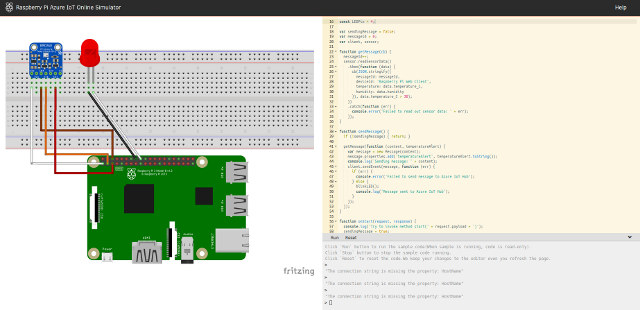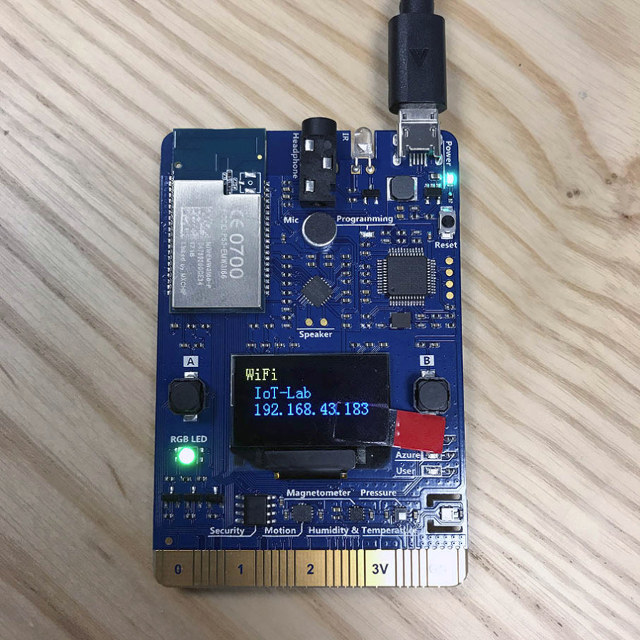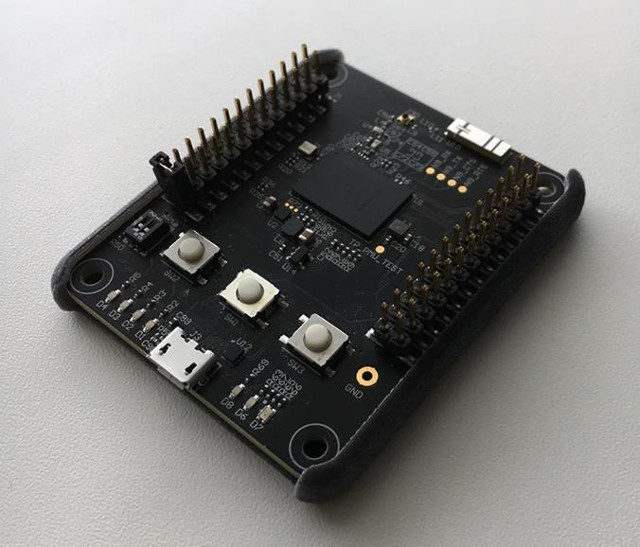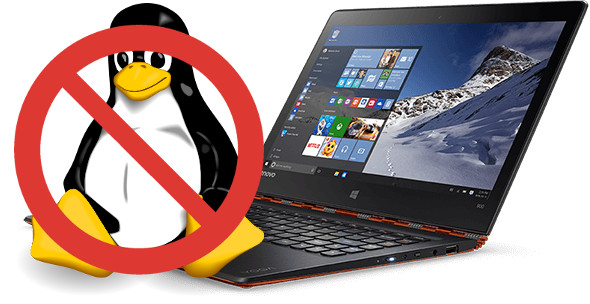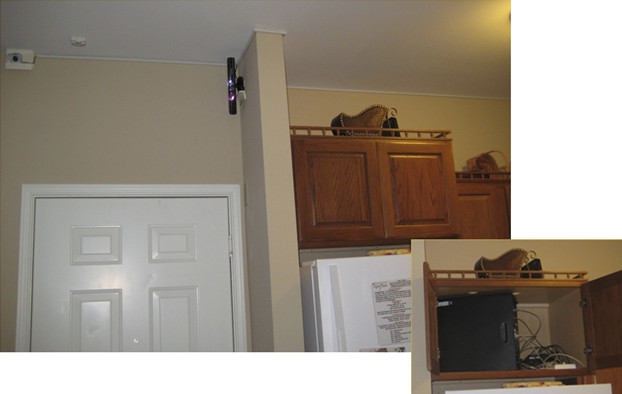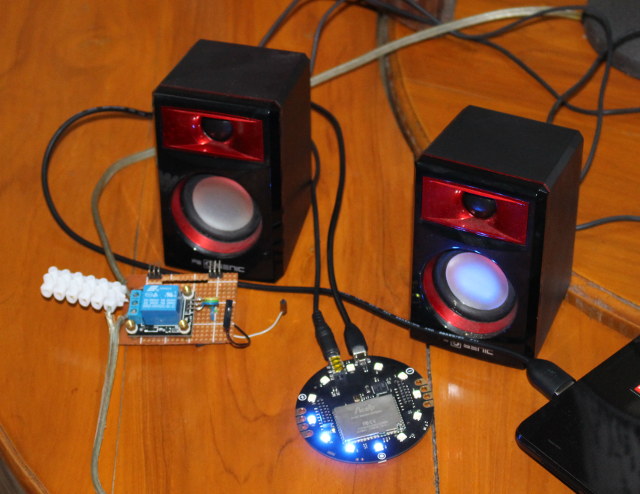If you were already following this blog when the first Raspberry Pi launched, you may have tried to emulate a Raspberry Pi and run Fedora in QEMU, as getting a board was a challenge at that time. Microsoft has launched its own Raspberry Pi (3) simulator running in web browsers, connecting to virtual sensors and components using Fritzing, and interfacing with the company’s Azure IoT cloud service. The preview version of the simulator does not allow you customize components on the breadboard, something you’ll be able to do in the release version, so we are stuck with a BMP280 sensor and red LED in the assembly window. on the left. On the top right, we’ve got sample source code written using Node.js to read temperature data from the sensor, push it to an Azure IoT Hub, and blink the LED in the coding area, and finally the integrated console window […]
MXCHIP AZ3166 IoT Developer Kit is Designed to Work with Microsoft Azure
MXCHIP is a Shanghai based company designing and manufacturing WiFi IoT modules such as EMW3165, which has now made a development board based on their EMW3166 STM32+ Cypress module – called MXChip AZ3166 – specifically designed for Microsoft Azure cloud computing platform. MXChip AZ3166 board specifications: Wireless Module – EMW3166 WiFi module with STM32F412 ARM Cortex M4F MCU @ 100 MHz with 256KB SRAM,1MB+2MB SPI Flash, Cypress BCM43362 WiFi chip Display – 128×64 OLED display Audio – Audio codec, built-in microphone, and 3.5mm heaphone jack Sensors – Motion sensor, magnetometer, atmospheric pressure sensor, temperature and humidity sensor Expansion – Finger extension interface with 25 external I/O pins including GPIOs, I2C, I2S, UART, ADC, Reset, 3.3V, and GND Debugging – DAP Link emulator USB – 1x Micro USB port for power, programming, debugging Misc – 2x user buttons; 1x RGB light; 3x working status indicator; IR emitter; Security encryption chip Power Supply […]
Microsoft is Working with Mediatek on Project Sopris Secure WiFi MCU
There are serious security issues with the Internet of Things at all levels: hardware, software, network, and end-users. Microsoft Research NExT Operating Systems Technologies Group has been tasked with “exploring the goal of securing the vast number of low cost Internet connected devices coming online” with Project Sopris. They have shared their first technical report that identifies “seven properties of highly secure devices”, and describes their experiments towards designing microcontroller based prototype devices adapted from Mediatek MT7687 MIPS microcontroller, and exhibiting those seven properties. The seven properties identifies by Microsoft team include: Hardware-based Root of Trust – Unforgeable cryptographic keys generated and protected by hardware. Physical countermeasures resist side-channel attacks. Small Trusted Computing Base – Private keys stored in a hardware-protected vault, inaccessible to software. Division of software into self-protecting layers. Defense in Depth – Multiple mitigations applied against each threat. Countermeasures mitigate the consequences of a successful attack on […]
Report: Linux Cannot Be Installed on Microsoft Signature Edition PCs, Laptops and Tablets
Microsoft Signature program is designed to make sure certified devices offer the best possible experience for users, as they can not come with bloatware, include Windows Defender, and must meet strict hardware requirements. However according to a Phoronix report, “providing the best possible user experience” also includes blocking installation of alternative operating systems such as Ubuntu, Debian, or other Linux distributions. The issue was discovered by rijesh who attempted to install Ubuntu 16.04 on his Microsoft Signature Edition Lenovo Yoga 900 13-ISK2 laptop, and noticed that while the BIOS and Windows 10 could see his 512 GB hard drive, Ubuntu was unable to find it, and a customer support representative answered that: This system has a Signature Edition of Windows 10 Home installed. It is locked per our agreement with Microsoft. Another user reports having successfully installed Ubuntu 16.04 on his Lenovo YOGA 900-13ISK, so the devil is in the […]
Large American Technology Companies Abusive Practices Against Bloggers
OK the title might be a little over of the top, but within the last month or so, I’ve been a “victim” of three American companies’ requests, via third parties, namely their customers or technology partners, never directly, to delete or amend the content of this blog. One which I believe is justified albeit not really necessary, and two are just ridiculous, with the latest one prompting me to write this post. The first issue was about a post entitled “Allwinner A64 based Pine A64 and Banana Pi M64 Boards Can Now Run Windows 10 IoT Core“, where I shared .ffu firmware file links that I found directly via a page on Microsoft Azure github about Banana Pi board. There were accessible without any EULA, or agreement. So The Internet being the Internet, where you can freely share links that don’t break any sort of copyrights or promote hate, I […]
Sensors Predicting The Future – Elderly Persons Fall Prediction and Detection with Kinect, Webcams and Microphones
Wearables can be used your young children or elderly persons to monitoring their locations or health, and one use case, especially for old age persons, is to detect falls. However, it’s quite possible they don’t like it and/or not always wear it, so the Center for Eldercare and Technology of the University of Missouri designed a system based on Microsoft Kinect, two webcams, and microphones in order to detect falls, and even predict falls by analyzing gait, i.e. the pattern of movement of the limbs. The picture above shows at least part of the hardware setup with the Kinect, a webcam, and a PC tower doing the processing stored in a cupboard. Fall detection algorithms are relying on the microphone array, Microsoft Kinect depth camera, and a two-webcam system used to extract silhouettes from orthogonal views and construct a 3D voxel model for analysis. Passive gait analysis algorithms are for […]
Hardware Requirements for Discounted Windows 10 Licenses for Entry Level mini PCs, TV Sticks, Tablets, Notebooks, and AiO
Even since the first low cost mini PCs and TV sticks started to come to market there was lots of confusion about Windows 8.1/10 licenses, because while small tablets could be shipped with Windows 8.1 with Bing/Windows 10 with a free license, mini PCs required a different discounted NTE license costing between $15 and $30. Price differs depending who your ask… So while the cheapest devices normally shipped unactivated, some companies like PiPo decided to install Windows with the latest version to cut costs… Microsoft eventually noticed, and PiPo had to stopped the practise, instead making mini PCs with small displays… The exact hardware requirements were also unclear so far for either the free or discount tablet, but the following table dropped in my email Inbox recently… It explains which hardware is accepted for an Entry level license. OST means Online Service Terms, and the devices matching the hardware requirements […]
Getting Started with ReSpeaker WiFi IoT Board’s Audio Capabilities, Voice Recognition and Synthesis
ReSpeaker is a development board combining an Atmel AVR MCU, a MediaTek MT7688 WiFi module running OpenWrt, a built-in microphone, an audio jack, and I/O headers to allow for voice control and output for IoT applications. That means you could make your own Amazon Echo like device with the board and add-ons, use it as a voice controlled home automation gateway and more. The board was launched on Kickstarter a few days ago, and already raised $100,000 from about 100 backers, but I’ve received an early sample, so I’ll provide some more information about the firmware, and shows how to use with some Python scripts leveraging Microsoft Bing Speech API. You’ll need a micro USB to USB cable to connect your to computer (Linux, Windows, Mac OS…), and a speaker to connect to the board. Linux (OpenWrt) boots in a few seconds, and once it’s done all RGB LED will […]


